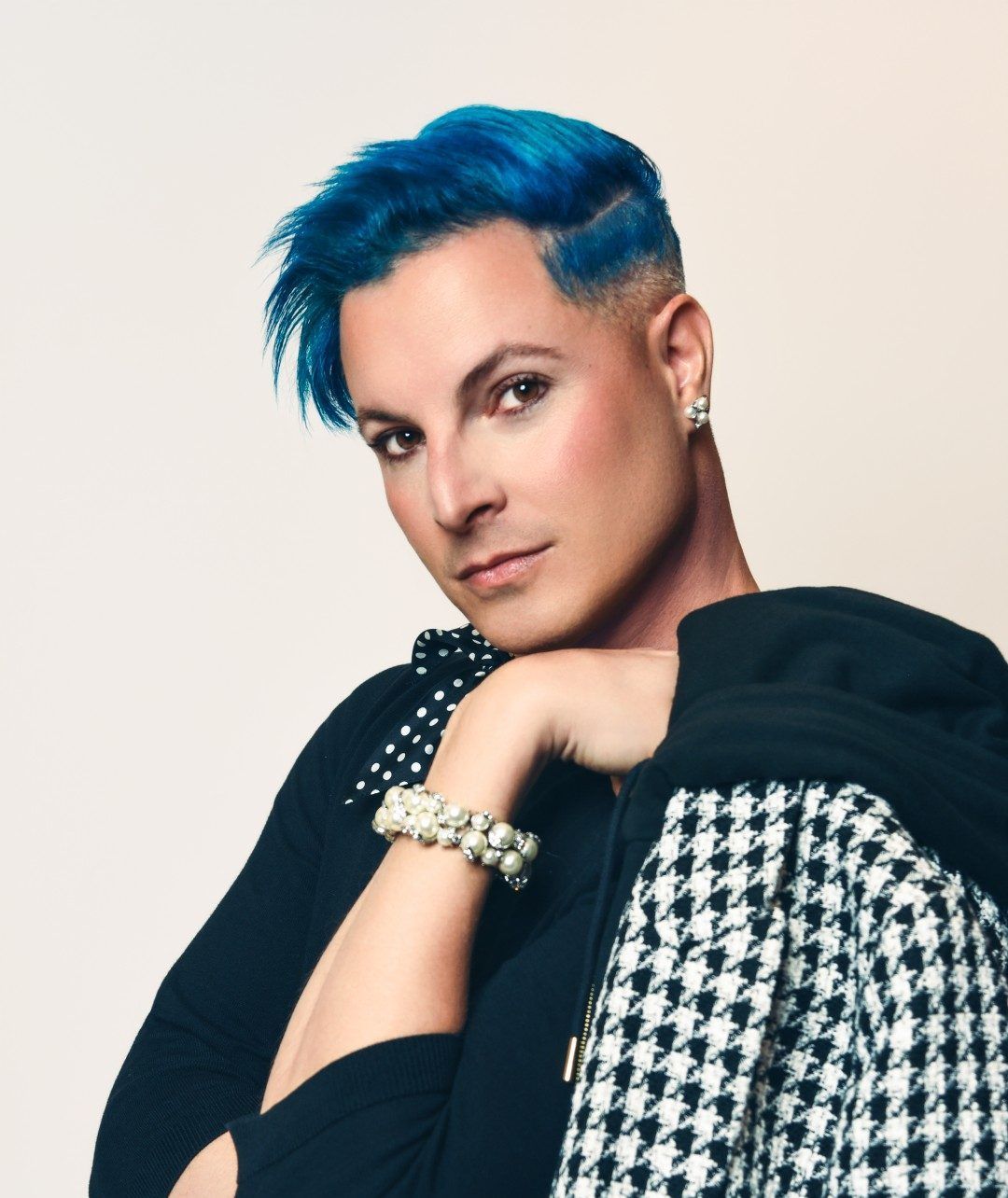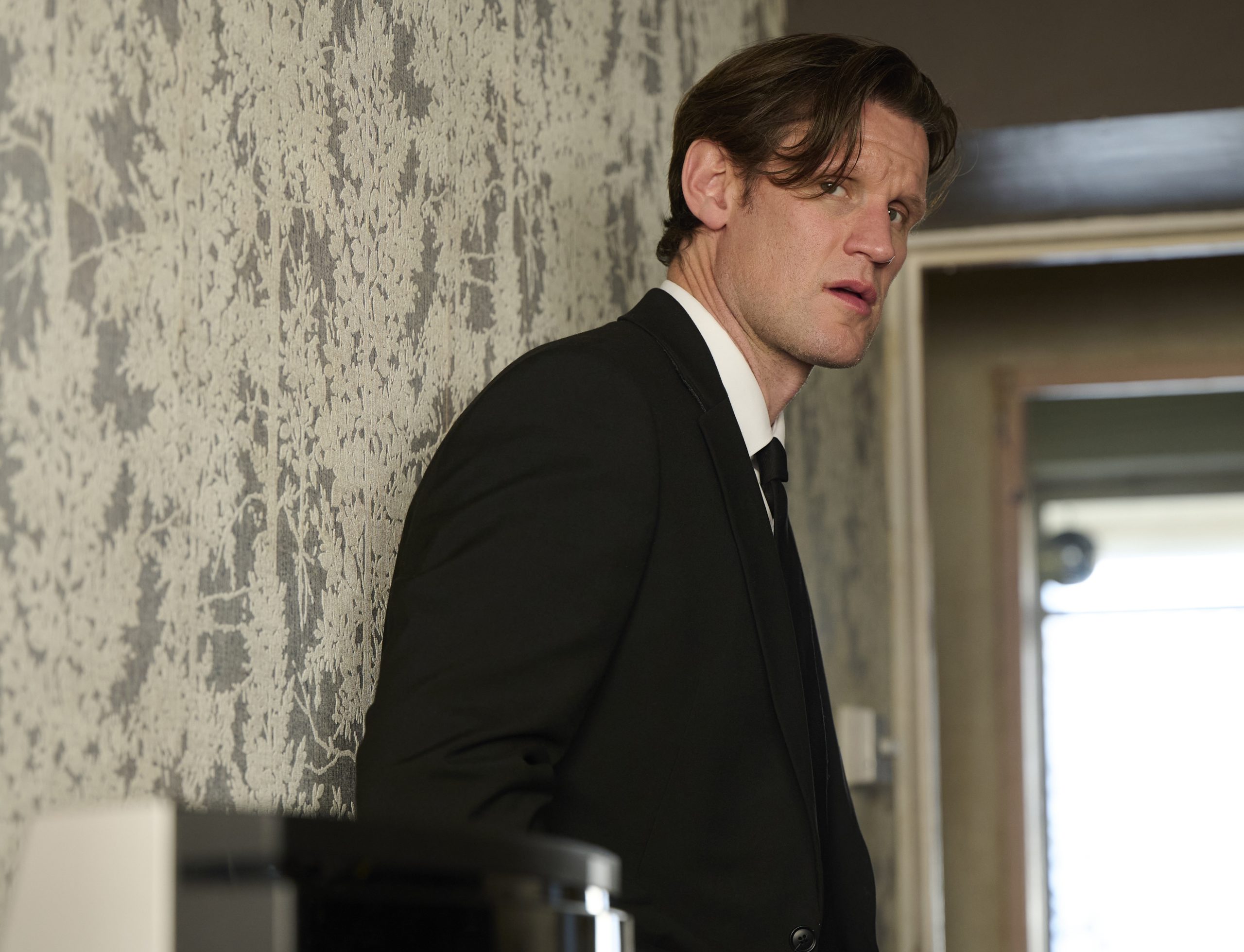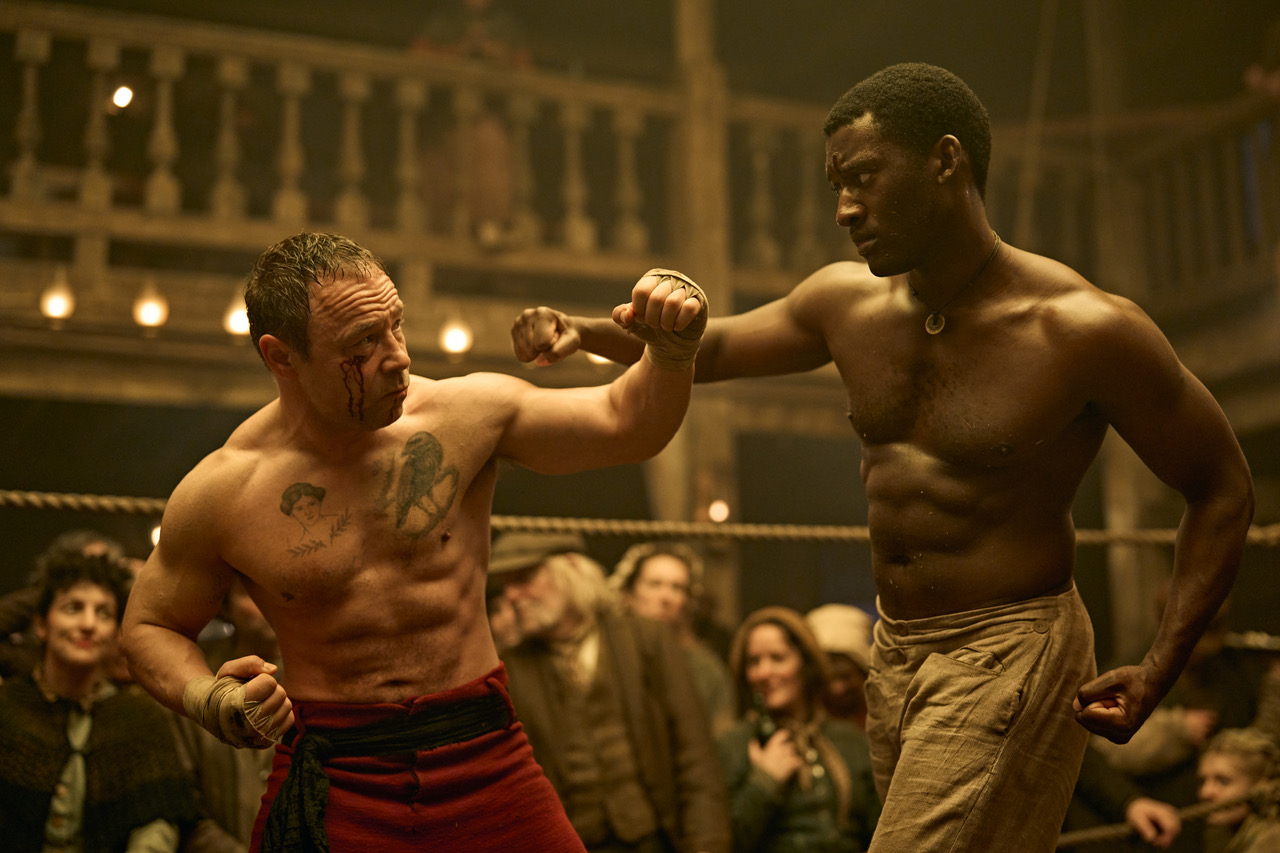JP Karliak is best known as Morph in X-Men ’97, the sharp-witted, shape-shifting fan favourite whose impact – particularly as a rare nonbinary superhero – has gone far beyond Saturday morning cartoons. A seasoned voice actor with a flair for the villainous and the ridiculous, Karliak has taken on legacy roles like Wile E. Coyote, Boss Baby, and the Joker – and now stars as both Gargamel and his equally dastardly brother Razamel in the upcoming Smurfs movie. We caught up to talk queer coding, cackling, activism through nerdery, and why making noise matters – on screen, in the booth, and at the ballot box.
What drew you to The Smurfs movie, and how did you end up with both the roles of Gargamel and Razamel?
I got an audition. That’s how most of it starts – not a script being slid across my desk. Just: here’s the thing, give it a go.
They brought me in early, with a bunch of other actors, to do a table read and record some scratch dialogue – temp lines before the celebrity casting. I came back later to do more, this time solo. I was trying out a few characters, and over time it just narrowed down to Razamel – Gargamel’s brother. They kept bringing me back every couple of months – more lines, more laughs, execs loving it. I thought, ‘Maybe I’ll get to be weirdo Smurf #5 in the background.’ That alone would’ve been amazing.
Then, while I was on my honeymoon – literally just landed in Athens – I got a call from my agent: ‘You booked it.’ I’d landed Razamel. Total dream.
I’d scratched a bit of Gargamel along the way, and one day during a Razamel session there was a scene with both brothers. They couldn’t find the Gargamel scratch. I offered to just do it. Switched back and forth between the voices. They were floored. That scene went up the chain, and a little while later I found out I’d booked that role too.
It’s surreal. Two major characters in an animated feature? That doesn’t happen often for voice actors like me.
When you’re voicing someone like Gargamel – such an iconic character with a vocal legacy – how do you approach that?
These were voices I came up with during the scratch process. I didn’t originally audition for the project. For the table read, they just assigned us roles and sometimes swapped us around. I read Razamel before Gargamel, and I was thinking, ‘Okay, he’s Gargamel’s brother – he should sound like he’s from the same family, but still distinct.’
So I used the original Gargamel – Paul Winchell’s voice – as a reference point: nasal, very specific. I decided Razamel should contrast that – deeper, gravelly. So when I ended up getting cast as Gargamel too, I thought, ‘Well, I made Razamel the counterpoint, so I have to lean into the original.’
I didn’t study it. I didn’t go back and watch clips. I just relied on childhood memory – Saturday mornings, watching The Smurfs, remembering how Gargamel sounded. It’s definitely my interpretation, but it’s grounded heavily in what I remember of Paul Winchell.
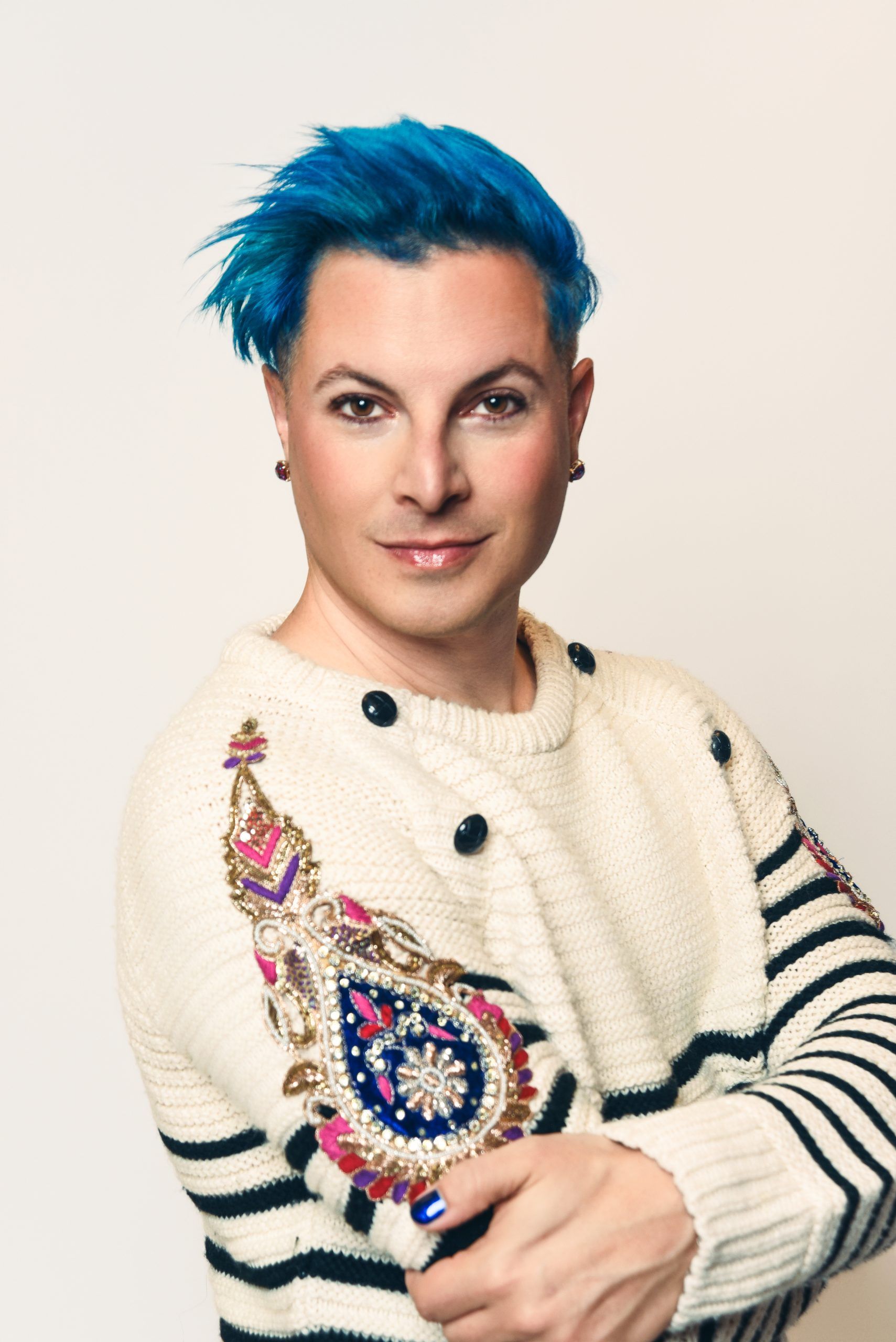
Did they give you much direction, or were you free to come up with that version yourself?
It was all freedom. When they heard it, they just went, ‘That’s the one.’ There wasn’t an audition or a set of vocal notes. From the start, it was just: come in, try something. If it lands, great. And when it landed, they said, ‘Yep – that’s it.’ That was really cool.
And how do you handle doing two characters having a conversation with each other? I can’t even conceive of that – you’re having to be in character as two different people at once.
There was only one time I actually recorded them simultaneously. Usually you’d do one character all the way through, then go back and record the other. But that one time, it was just easier to try the full scene live. You’re playing mental tennis with yourself – volleying back and forth, anticipating how one character’s line will land so you can respond with the other. It’s a rhythm you have to feel in real time.
Most of the time in animation, you’re not recording with the other actors. Maybe someone will read in with you, but usually you’re imagining how the scene plays out. You have to picture what the other actor might sound like, how they’re performing, and adjust your delivery accordingly. It’s a lot of imagination work.
What really helps is a great voice director. For something like X-Men ’97, where it’s a big ensemble with wild comic book dynamics, a good director will give you really specific scene context: you’re 30 feet away, traffic’s roaring, you’re exhausted, mid-battle, delivering the line with anger but still keeping your caustic wit. All of that guidance helps make the individual performances feel like a coherent scene once it’s all edited together.
What’s the most technically challenging voice role you’ve done so far?
Gargamel’s up there – that voice is tough to do repeatedly. It’s hard on the throat.
But I’d have to say Boss Baby. I recorded six seasons of that show, and he’s a very overwritten character – in the best way. He just talks a lot. Especially for a kids’ show, he has tons of lines, speaks fast, and does it all in that deep, gravelly voice. So there’s a lot going on technically every time.
Plus, he’s a businessman, so sometimes he’s throwing in other languages, jargon, rapid shifts in tone. You couldn’t coast through those sessions – you had to be completely on it every time.
You’ve done a lot of legacy characters – Wile E. Coyote, the Joker, Boss Baby, now Gargamel. Do you find each one comes with a different kind of pressure?
Most of my career has been legacy characters. They all come with their own kind of pressure. With Boss Baby, they wanted an exact soundalike, so I had to really lock into the cadence and tone. For Wile E. Coyote, most people just think of him holding up a sign that says ‘Yip,’ so there was more freedom – it became about putting my own stamp on it. Then you’ve got someone like the Joker – which I’ve played twice – where everyone has strong opinions, and people get mad if it’s not what they expect.
Each role’s different. I think of it like playing in a sandbox – production defines the parameters, but within that, I get to play how I want. I like that kind of structured freedom. I also can’t worry too much about fan expectations. I’m a fan too, and I trust that if I’m enjoying it and bringing something honest to the performance, that will connect. I might not be somebody’s favourite Gargamel, but I might be a couple of people’s really favourite Gargamel.
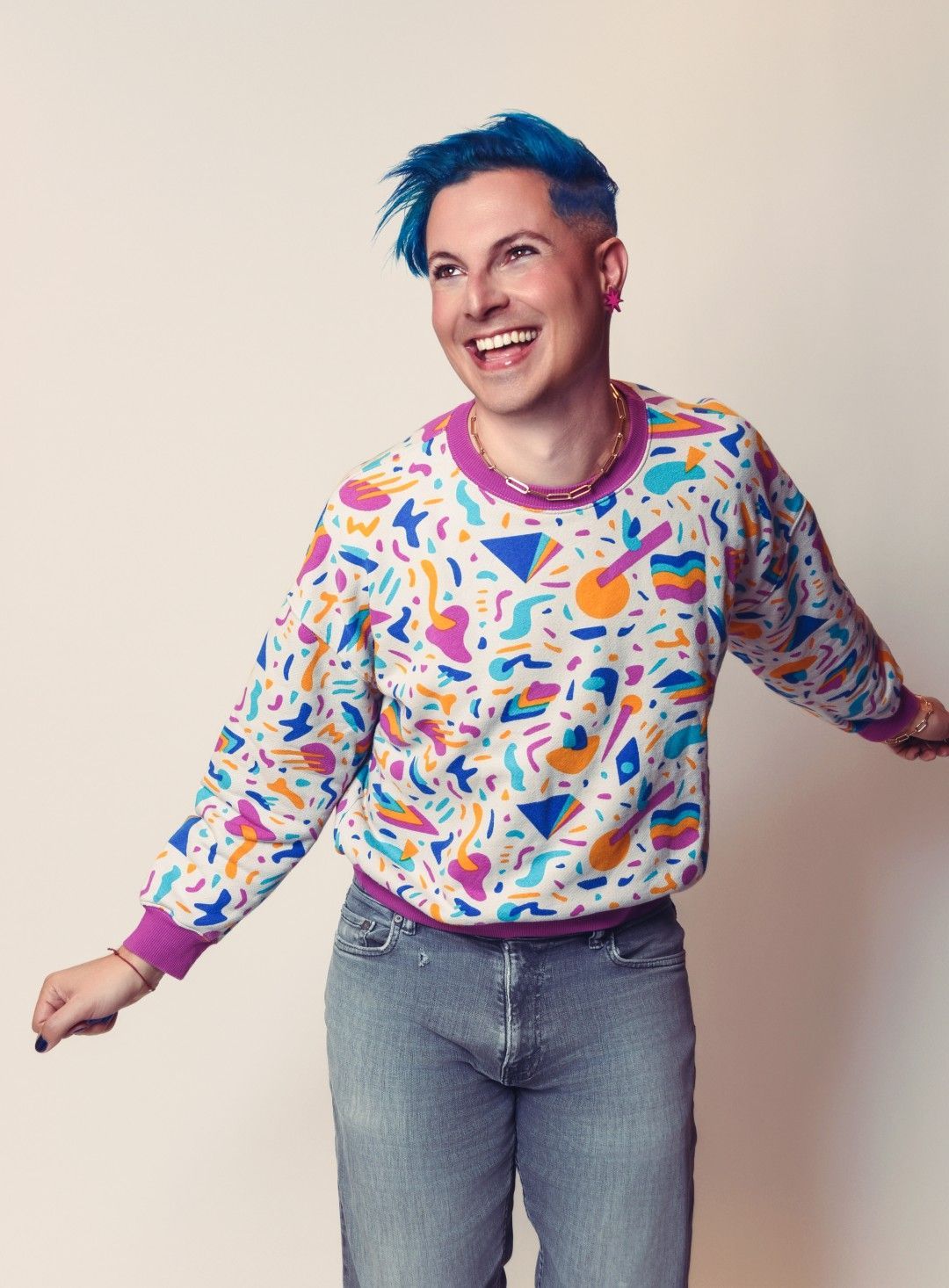
Absolutely. So which do you prefer then – voicing original characters or stepping into legacy roles?
I’ve done so many legacy roles at this point, I’d love to originate a villain and really put my stamp on something from the ground up. That’s the dream. That said, my white whale – the one legacy role still on my bucket list – is Skeletor.
How does Skeletor sound?
[in Skeletor voice] You bumbling boob, He-Man!
Amazing. That’s like a really posh American voice or something.
It’s what we call Mid-Atlantic. I blame Captain Hook.
Disney’s Captain Hook really set the template – both for the posh villain and for the queer-coded villain. Before the Hays Code in the U.S. – a set of censorship rules that shaped Hollywood films for decades – queer characters were usually comic relief: light, foppish, camp. After the code labelled us deviant, queer characters had to be villains, or be punished, or be redeemed through suffering. That’s where the queer-coded villain was born.
There was one film – I can never remember the title – with a queer psychopath. The actor playing Captain Hook copied that voice, and from then on, almost every Disney villain had that vibe. Ursula was literally based on Divine – the legendary drag performer and cult film icon. And all those ’80s villains – Skeletor, Cobra Commander, Gargamel – they’re all sweet, queer-coded villains.
You’ve mentioned villains a few times – and when I asked what kind of roles you like, you lit up at the idea of playing one. What is it about villains that you love so much?
Well, I’m literally sitting here with a water bottle that has the Joker on one side and Skeletor on the other – and I’m wearing my Rita Repulsa T-shirt. So yeah, I love a villain. It’s partly their outcast nature. Growing up queer, feeling like the outsider, feeling misunderstood – that resonates. And especially the villains I grew up with in the ’80s – they were camp, they were queer-coded, they were larger than life. That energy was magnetic to me.
Also, take someone like Skeletor or Gargamel. Their power isn’t about brute force – it’s wit, cunning, creativity, magic. I connected with that. I never cared about He-Man just punching through a wall. I wanted to see Skeletor come up with a new, ridiculous, brilliant plan every episode. Same with Gargamel – constantly scheming, trying everything to reach Smurf Village. And of course, I loved Brainy Smurf. Still do. I like the smart ones.
So yeah, it’s that idea of the outsider – someone who has to use their brain or their weirdness or their flair to get what they want. To be seen. To matter. And of course, you know – who doesn’t love a villainous laugh?
What are the biggest misconceptions people have about voice acting?
That it’s easy. And I say that with an asterisk, because of course – we’re not heart surgeons or soldiers. But there’s a perception that it’s effortless. That it’s just talking into a mic in your pyjamas. For some people, sure – it can be easy. Chris Rock once said doing Madagascar was a breeze. But he was basically playing himself as a zebra. When you’re not doing that, when you’re crafting a character from scratch, it’s a different story.
On camera, you’ve got all these subtle facial movements to help convey emotion. In voice work, all of that nuance has to come through the voice alone. You’re compensating for the audience’s suspension of disbelief – asking them to connect with something drawn or animated as if it’s real. That takes real skill. It also takes time. I’ve been doing this almost 20 years, and it was a decade before it became my full-time job. It’s fun and rewarding, but it’s definitely not simple.
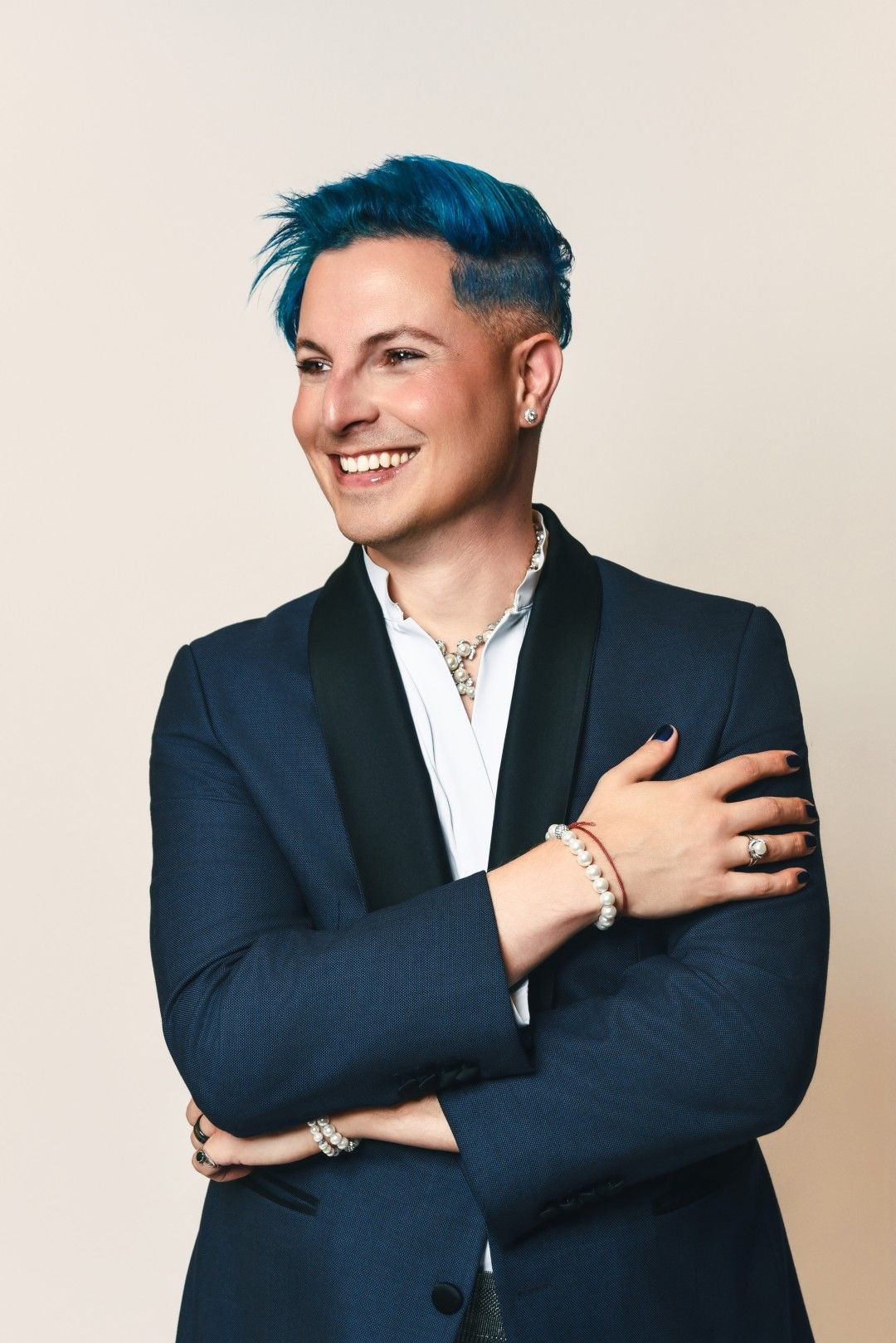
You trained with Bob Bergen – the longtime voice of Porky Pig and a legendary coach. What’s the best advice he gave you?
One that’s stuck with me isn’t even about voice acting. Bob always said, if you have something important to say, say it in person – never online. It’s about protecting your integrity. Once it’s written down, it can come back.
In the booth, he taught me to be a detective. Sometimes all you get is a vague character description – maybe just ‘male, 30s to 40s, quirky’ – and a few lines of dialogue. It’s up to you to dig into that, spot the clues, imagine what’s going on beneath the surface, and bring it to life. Then you place it in a world: how loud do you need to be? What are you wearing? How far away are you? That kind of detailed, imaginative work – that’s what Bob gave me.
So you’re Morph in X-Men ’97. What were your first thoughts on the character – and were they always going to be nonbinary when you took it on?
Yes, they were. Morph was in the original ’90s series, voiced by Ron Rubin, but when the reboot leaned into Morph’s gender identity, they wanted to cast authentically. When I got the audition – under a codename – I clocked pretty quickly that it was X-Men. I called the director, who’s a friend, and asked, is this what I think it is?
We talked about Morph’s identity, and it was one of those rare legacy roles where I had total freedom. The only thing they wanted kept was the signature laugh from the original series. That was fine – but everything else? I just played me. Morph’s genderqueer, navigating trauma in the ’90s, sharp, funny, crushing on a straight guy – it all resonated. There was no need to layer on a voice. It made shapeshifting easier too. Using my natural voice helped ground all the transformations. He’s already extra – I didn’t need to add more.
The process was all remote, during lockdown. I knew it was X-Men, but the scale of it didn’t hit until the premiere, when I finally met the rest of the cast and saw it on the big screen. Then came the cons, the huge crowds – and the realisation that this meant so much more to people. X-Men has always stood for the outcast. Born out of the civil rights era, embraced by the gay rights movement – it still speaks to everything we’re facing today. There’s a reason it still crackles.
What sort of reaction was there to having an openly queer, nonbinary character in X-Men ’97? Online, in the wider world – what did you see?
There were a few posts saying ‘X-Men is woke now’, but if you’ve followed X-Men from the start, it’s always been woke. Where have you been?
I didn’t take any of it to heart. Real fans know X-Men has always included queer characters, characters of colour – that’s baked into the franchise. The broader reaction was incredibly positive. And I think it’s because Morph wasn’t added as token representation.
Sometimes shows include a queer character just to tick a box, and if that character isn’t well written, there’s no defence when the backlash comes. That creates a false narrative that queer inclusion equals poor storytelling. But with X-Men ’97, the story’s authentic. Morph’s gender identity is never stated directly – Rogue uses they/them once, but that’s it. And yet, it’s all there in the performance, in the writing.
The team includes queer writers and writers of colour, which brings depth to characters like Storm, Forge, Bishop, Jubilee, and Sunspot. Once the first few episodes dropped and people saw how strong the show was, that early backlash faded. When diversity is handled with care and honesty, it strengthens the story. It only falls flat when it’s done without purpose or heart.
What made you want to set up Nerds Vote?
Originally, I didn’t! It was my good Judy best friend and partner in crime, Courtney Taylor – a voice actor and director – who came up with the idea. She was frustrated by how many Americans don’t vote, and thought, If I weren’t so busy doing conventions, I could help register people. Then it hit her: Why not register them at conventions?
She brought me on, and we co-founded Nerds Vote in 2017. We started by partnering with established voter registration organisations to set up booths at cons. When the pandemic hit, we shifted to online outreach – getting our fellow ‘notable nerds’ to encourage their fans. If you hear from the Joker, Wonder Woman, or Batman that you should vote, maybe you will.
This year, we sent stickers with QR codes to 50 comic book shops for Free Comic Book Day – just one more way to meet people where they are. We’re nonpartisan, partly for legal reasons, but also because we trust this community. Nerds care about the underdog, about empathy and inclusion. We believe that if they show up, they’ll vote not just for themselves, but for others too.
Have you found fan communities to be a useful space for activism, or do you encounter a lot of resistance?
It depends. Trekkies tend to be progressive. Star Wars fans… less so. I love the franchise – my husband and I devoured Andor and Rogue One – but the light side/dark side binary can feed into black-and-white thinking, which sometimes attracts more conservative views.
The X-Men community has been amazing – no surprise, given how rooted it is in stories of marginalisation. A lot of my other work is for kids, so the fans are lovely and wide-eyed.
The only really tough one was voicing the Joker – partly because it was a shooter game, partly because it’s the Joker. That role draws intense energy, and there was real vitriol. Not just criticism, but hate – even death threats. It’s wild. It’s similar to the Drag Race fandom – which I love, but which can get toxic. So I go into legacy roles now with eyes open. Not hesitance, just awareness.
Thankfully, I don’t think there’s a toxic Smurfs fandom. I think I’m safe.
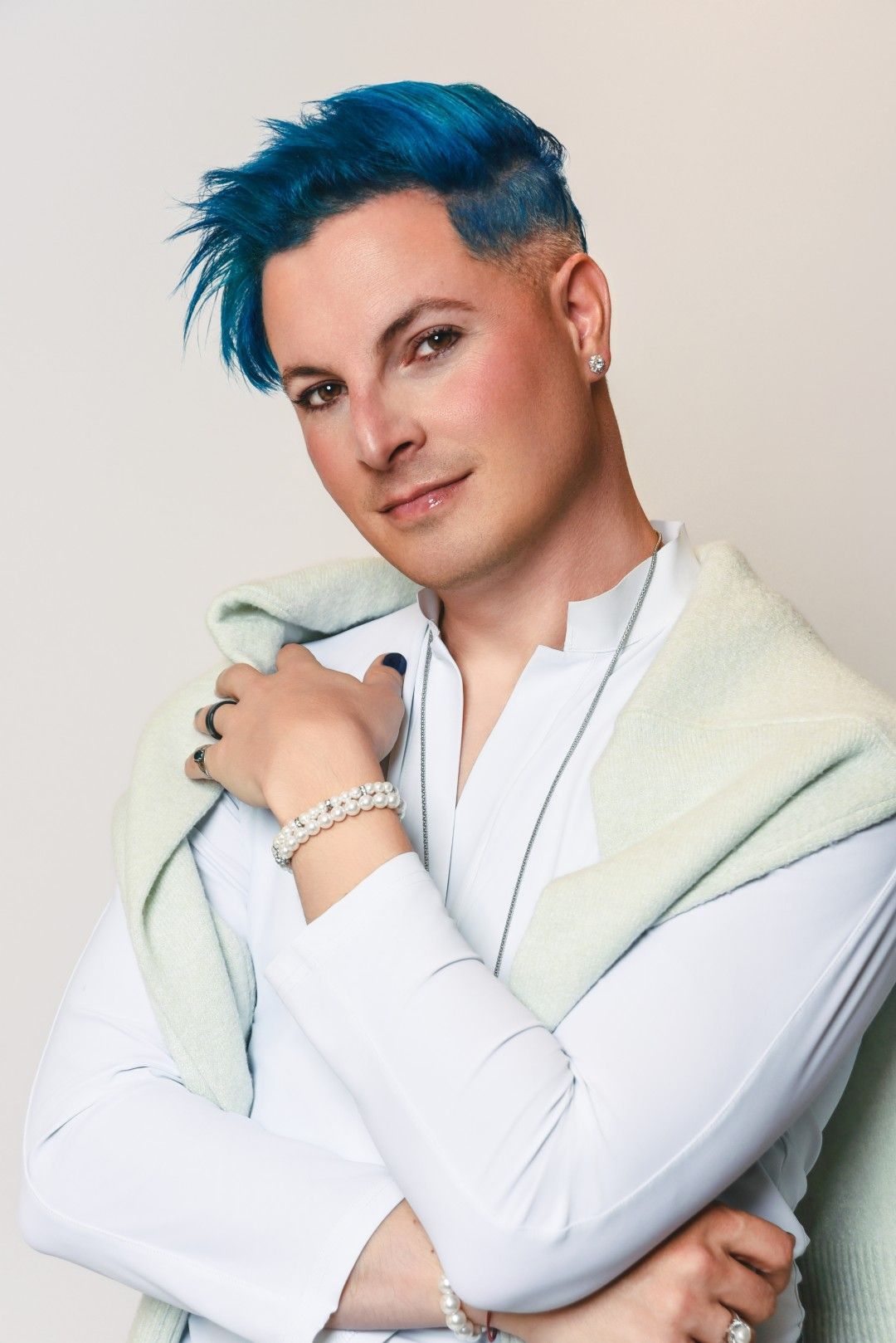
I heard about your Donna/Madonna one-man musical – that was based on a true story from your life, right?
Yes. I wrote it about 15 years ago – wild to think it’s been that long. It’s a one-man musical comedy about being adopted by an Italian Catholic housewife… and having a birth mother who’s a fashion columnist married to a British pop star. Donna Reed meets Madonna – hence Donna/Madonna.
There’s a bit of fiction in there. My birth mother, at least at the time, was private, so I tweaked the details slightly to protect her anonymity. The reality is, she’s a fashion designer married to a British soap star – but for the show, I thought, wouldn’t it be fun if Robbie Williams were my dad?
I mean, no shade to Robbie, but would anyone be that surprised?
Were there any lessons you carried over from that live performance into your voice work?
Oh my God – voice work into life, into everything. That whole experience was really transformative. It brought me closer to my mum, my birth mother, and even my dad, who had always struggled with my queerness – which plays a big part in the show.
I created Donna/Madonna during a slow period in my career. I had a steady day job but needed a creative outlet, and this felt like a love letter to the two women who shaped who I am. It wasn’t intended as a marketing tool – just something I needed to write and perform. But once it was out in the world, it became that. People connected with it. Industry folks saw it, and relationships formed because of it.
In a funny way, I became better known in voiceover by doing something that wasn’t voiceover. Not directly, anyway – but it resonated.
What is the most surreal fan interaction you’ve ever had?
Honestly, I don’t remember one specific moment, but the first convention we did as a cast – WonderCon in Anaheim – really stayed with me. We walked into a packed panel room, thousands of people, and even though I was overwhelmed by the response, part of me thought, They’re not here for me. They’re here for Wolverine, Rogue… the classics.
After the panel, I stepped outside and all these queer fans just wanted to hug me. They felt so seen. It was really moving. I’d been so focused on doing my job well, I hadn’t fully grasped the weight of what Morph means to people. That was the moment it really landed. This isn’t just a cool gig. It’s bigger than me. It has significance.
It really does. I can’t wait to see where you go from here.
Catch JP Karliak voicing Morph in X‑Men ’97, and starring as both Gargamel and Razamel in the upcoming Smurfs movie, in cinemas from 18 July 2025.
Words by Nick Barr
Photography by Tommy Flanagan

